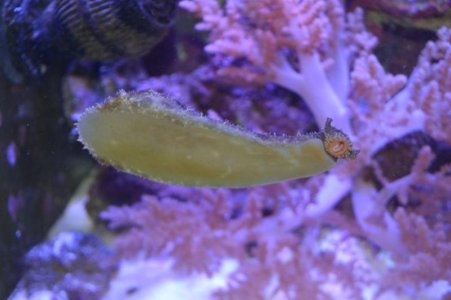Patrick Cox
Active member
My aquarium is now about 2 years old and I am having my first outbreak of Green Hair Algae. I started my tank with dry rock and ran GFO and Rox Carbon for the first 6 months or so and my tank was very sterile and I was not able to sustain corals very well. After realizing this I spent lots of time trying to increase nutrients and over the past 9 months or so, I have gradually seen more algae in my tank and more color in my corals. Although I still have problems keeping some SPS corals.
Now after a 10 day vacation, I came home to a green hair algae outbreak. Over the past say 3 months, I have really noticed a lot of green film algae but my lawnmower blenny has really taken care of that. However he obviously does not like this latest algae. So, question is - what should I do now to reduce this algae?
Tank info:
75G - 36x24x20
Large Skimmer
No Carbon or GFO currently
Not mechanical currently but I have filter socks if needed
T5/LED lighting - 6 hours per day plus 1.5 hours dawn/dusk.
2 MP40 running 50-75%
SPS and LPS Corals
2 Clowns
1 Cardinal
3 Flasher Wrasse
1 Yellow Assessor
1 Possum Wrasse
1 Lawnmower Blenny
Parameters are as follows:
Salinity - 35 ppt
Temp - 77.6
PH - 88.05
Alk - 7.7 (This has been creeping lower. I think my corals are consuming more.)
Ca - 400
Mg - 1230 (I know this is low. I am dosing today.)
Phosphate - .03 (I wonder if the algae is consuming this and reading lower than actual?)
Nitrate - 0.1 (Same comment as PO4)
FTS from Today:

Thanks for your suggestions!
Now after a 10 day vacation, I came home to a green hair algae outbreak. Over the past say 3 months, I have really noticed a lot of green film algae but my lawnmower blenny has really taken care of that. However he obviously does not like this latest algae. So, question is - what should I do now to reduce this algae?
Tank info:
75G - 36x24x20
Large Skimmer
No Carbon or GFO currently
Not mechanical currently but I have filter socks if needed
T5/LED lighting - 6 hours per day plus 1.5 hours dawn/dusk.
2 MP40 running 50-75%
SPS and LPS Corals
2 Clowns
1 Cardinal
3 Flasher Wrasse
1 Yellow Assessor
1 Possum Wrasse
1 Lawnmower Blenny
Parameters are as follows:
Salinity - 35 ppt
Temp - 77.6
PH - 88.05
Alk - 7.7 (This has been creeping lower. I think my corals are consuming more.)
Ca - 400
Mg - 1230 (I know this is low. I am dosing today.)
Phosphate - .03 (I wonder if the algae is consuming this and reading lower than actual?)
Nitrate - 0.1 (Same comment as PO4)
FTS from Today:

Thanks for your suggestions!


